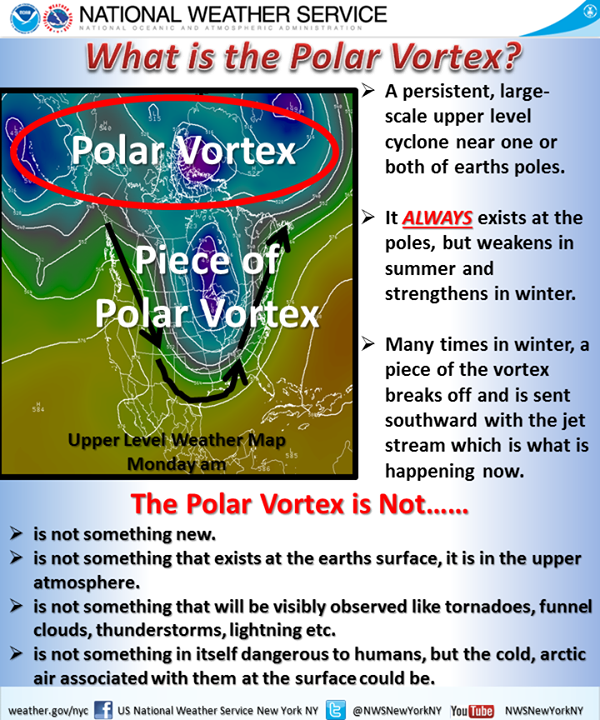. . . or just damn cold!
Remember when the local broadcast weatherman with a sort of hardy Midwest attitude would warn us that a “Canadian” or “Arctic” cold mass would be descending to chill our Monday, Tuesday . . . Saturday, whatever? Those words had a ring of normality and seasonal regularity. We would also see or hear the term “Alberta Clipper” reminiscent of the fast wind born ships almost as if it were a scheduled visit. Or we may simply have nodded (and nonetheless prepared) to the more mundane warning of a “cold snap,” another term that implies something recurring but that won’t last.
Now the new word of art is “polar vortex” which has an aura of out of control, OH MY GOD, this has never happened before, what are we going to do, about it.
The new term resonates better with the scaremongering behind “climate change” and the accompanying teaching that man is responsible and therefore more government is necessary to save us from the “polar vortex,” which is probably Gaia’s wrath for the modern world’s many sins against her.
Well apart from how the Associated Press and the usual suspects might like to see the term played, here is an explanatory graphic from the National Weather Service* about the term.
Record lows locally? Not even close.
You may have heard or seen talk of record lows with reference to this current cold snap. Be wary. Depending on the source used the reference may be to records that only go back to say 1960 or 1945 when a particular database began for the particular weather reporting station. Some arbitrarily use a reporting history truncated at 30 years.
For one example of the confusion possible, consider the Weather Underground, a popular weather reference site. If you select the weather almanac for Davenport, Iowa for January 6 it lists yesterday’s low temperature of -16°F as the current record. It really isn’t even close. Selecting the weather station Moline, Illinois, just across the river, and the almanac record is -26°F in 1887. The data base used for Davenport does not go back as far but it is still listed as a “record.” Indeed the whole matter of “weather history” is fraught with arbitrariness, technical, geographic and other limitations. Few accurate records in this area extend further back than the 1860’s or so.
But imagine the difficulties in coping with -26°F in this area in 1887 or the quite possibly lower temperatures in earlier decades! Thank heaven for carbon fuels and the hardiness of this areas settlers (including the Indians, although they may have had the sense to winter south for the most part).
But digitizing the weather is not the only way to convey how cold it is / was. In researching this article in various scientific journals we came across these gradients:
“Colder than a polar bear’s toenails”
“Colder than a well diggers ass”
“Colder than a brass toilet seat on the shady side of an iceberg”
“It’s so cold outside my nipples could cut glass.”
“Colder than a mother-in-law’s kiss”
“Colder than moonlight on a tombstone.”
“As cold as a blue belly on a whale”
“It’s colder than your girlfriend Sally when you call her Julie”
“Colder than a penguin’s Popsicle”
“Colder than an Eskimo’s outhouse.”
” It was so cold I saw a politician with his hands in his OWN pockets.”
And my folks, who hailed from Michigan’s Upper Peninsula, spoke of:
“Cold enough for two pair of shoe laces” and . . .
Cold enough to freeze the cherries off of Aunt Sadie’s hat”
Feel free to add any of your own scientific comparatives. R Mall

